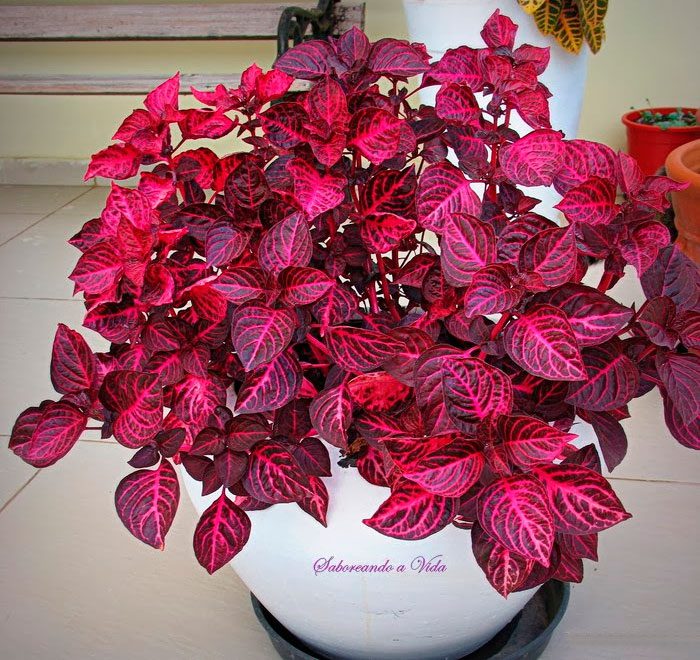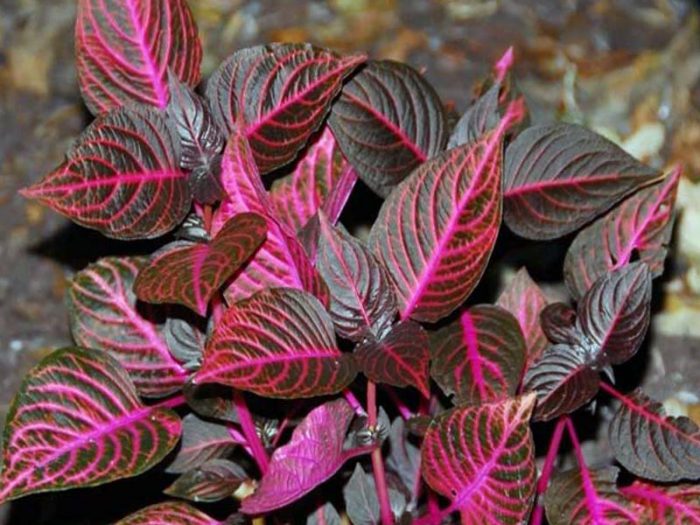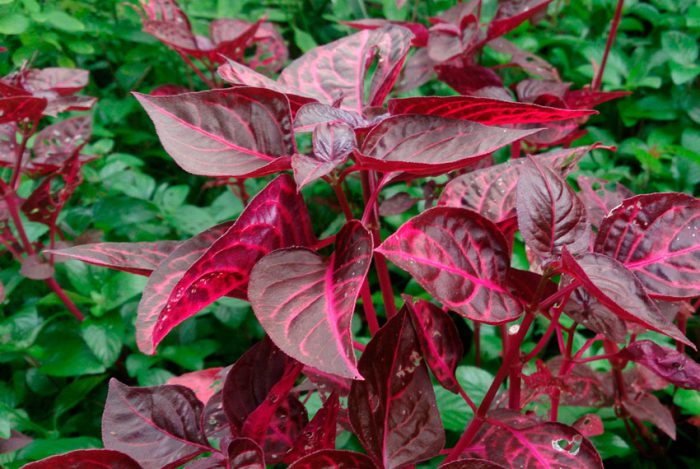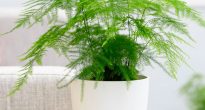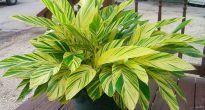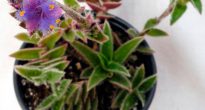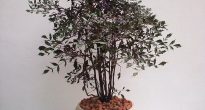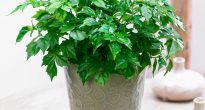Plant irezine (Iresine) is directly related to the amaranth family. This genus unites 80 species of various plants. In nature, they can be found in Australia, America, as well as on islands such as the Antilles and Galapagos.
Irezine is represented by shrubs, herbaceous plants and trees with climbing branches. Opposite leaflets are rounded or elliptical, less often lanceolate-widened. There are small teeth on the flat edge of the sheet. The inflorescence is capitate, outwardly similar to an ear.
Such species as irezine linden and irezine herbst are especially popular with florists. These species are valued for their decorative leaves, which have a spectacular color. Often, such a plant is used during planting work, and they are also planted on lawns along the curbs.
Content
Caring for irezine at home
Illumination
It is not recommended to place only on the North orientation window, on the rest you can. Such a flower is quite light-requiring and prefers bright lighting. But it should be borne in mind that if it is located on a south-facing window, then at noon hours you need to make the lighting diffuse, otherwise burns may appear on the surface of the leaves. Irezin is gradually taught to direct sunlight. If the plant is placed under fluorescent lights, then the day length should be about 14 hours.
Temperature regime
This plant does not have a special temperature regime. In summer, the plant grows and develops quite normally at temperatures from 15 to 25 degrees, and in winter - from 15 to 20 degrees. Make sure that in winter the temperature in the room is not less than 12 degrees, as otherwise rot appears on the flower, foliage falls off and in the end it dies. If in the summer it is too hot, the leaves will lose their turgor.
How to water
For watering such a plant, use soft, well-settled (at least 24 hours) water. If the tap water is too hard, then it is recommended to replace it with rainwater. In spring, summer and autumn, watering is carried out immediately after the top layer of the substrate dries out. In winter, watering should be reduced, but remember that you cannot allow the soil to dry completely in the pot. Irezine reacts negatively to both overflow and overdrying of the substrate.In the event that in winter the temperature in the room is kept less than 16 degrees, then watering the flower should be scarce.
Humidity
Feels quite normal at low air humidity in city apartments. However, moisturizing the foliage from a sprayer is helpful.
Fertilizer
Top dressing should be carried out in the spring-summer period 1 time in 7 days. For this, organic or mineral fertilizers are used. In winter, feeding is carried out less than once every 4 weeks, while the dose of fertilizer is reduced by 2 times (compared to the summer).
Pruning
An annual pinching is carried out to increase the splendor of the bush. It is necessary to pinch the apical shoots directly. More serious pruning is recommended in the last winter month, as this stimulates spring flower growth well.
Transplant features
If you grow irezine as an annual, then you can do without a transplant. When growing it as a perennial, transplantation should be carried out 1 time in 2 or 3 years. Suitable soil should be slightly acidic. In order to prepare an earth mixture, it is necessary to combine peat, turf and deciduous soil, as well as sand and peat, which should be taken in a ratio of 2: 4: 4: 1: 1. Do not forget to make a good drainage layer at the bottom of the tank, for which broken bricks or expanded clay are perfect.
Reproduction methods
It is recommended to cut cuttings from mother plants from the end of winter to mid-spring. Then they are planted in the sand. The temperature should be kept between 17 and 20 degrees, in which case full rooting will occur after 7-10 days. Rooted cuttings should be planted in separate pots, which must be filled with a soil mixture consisting of turf, leaf and humus soil, as well as sand, taken in a ratio of 2: 2: 2: 1. Young plants need a temperature of 19 to 21 degrees. Cuttings are recommended to be taken from young plants that have not yet lost their decorative characteristics.
Pests and diseases
The plant can settle aphids, whitefly and spider mites.
The plant is sick, as a rule, due to improper care:
- The plant sheds foliage - if this happens in young specimens, it means that they do not have enough light or that pruning was carried out out of time. Falling leaves in an adult plant is a completely normal process.
- The stems become elongated - poor lighting.
- Falling foliage - if this happens in summer, then the plant either does not have enough water, or there is a stagnation of liquid in the soil.
Video review
Main types
Iresine lindenii
Such a herbaceous perennial plant naturally occurs in the humid forests of tropical Ecuador. The stem is colored dark red and is slightly over 50 centimeters tall. On the surface of the dark red leaf plates there are many thin veins with a rich crimson color. The length of such lanceolate-oval leaves reaches 6 centimeters. If you trim the plant, then it begins to branch rather strongly, while the young shoots of the leaves grow relatively quickly.
Iresine herbstii
Such a perennial herb is found naturally in the rain forests of tropical Brazil. The stems are red in color and can reach a height of about 40 centimeters. Rounded leaf plates in the upper part have a heart-shaped shape. The leaves are painted in a dark purple color, and rich red veins are located on their surface. The variety "aureoreticulata" is distinguished by red shoots and leaf stalks. Red or golden veins are located on green leaf plates. The "wallisi" cultivar is a compact, rather branchy plant with small leaves of a metallic red color.

